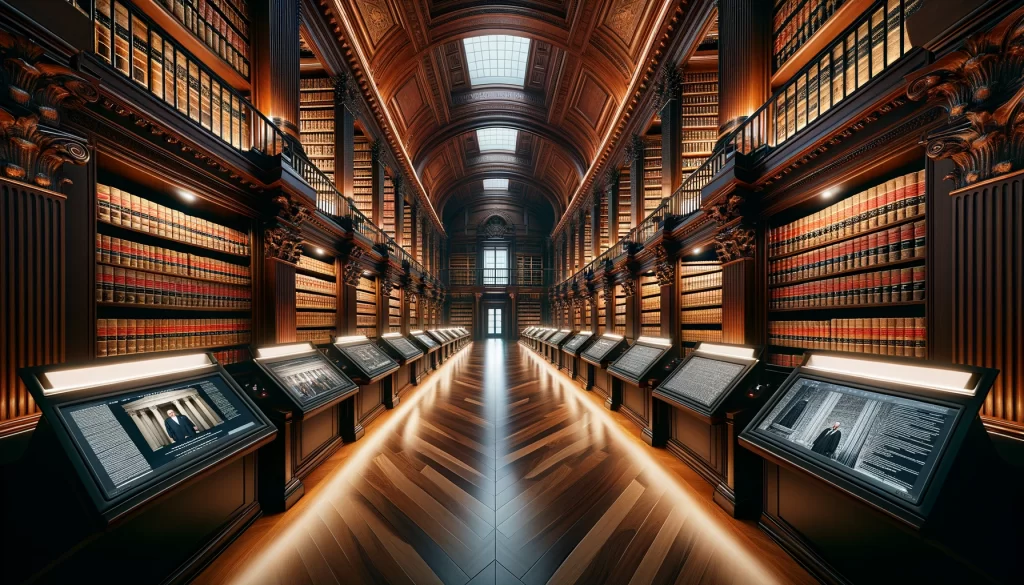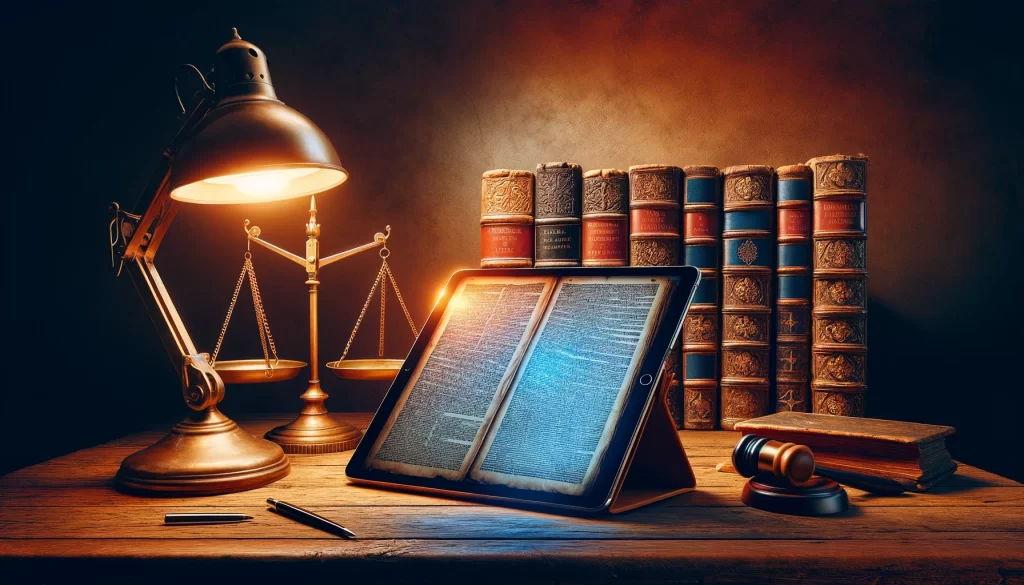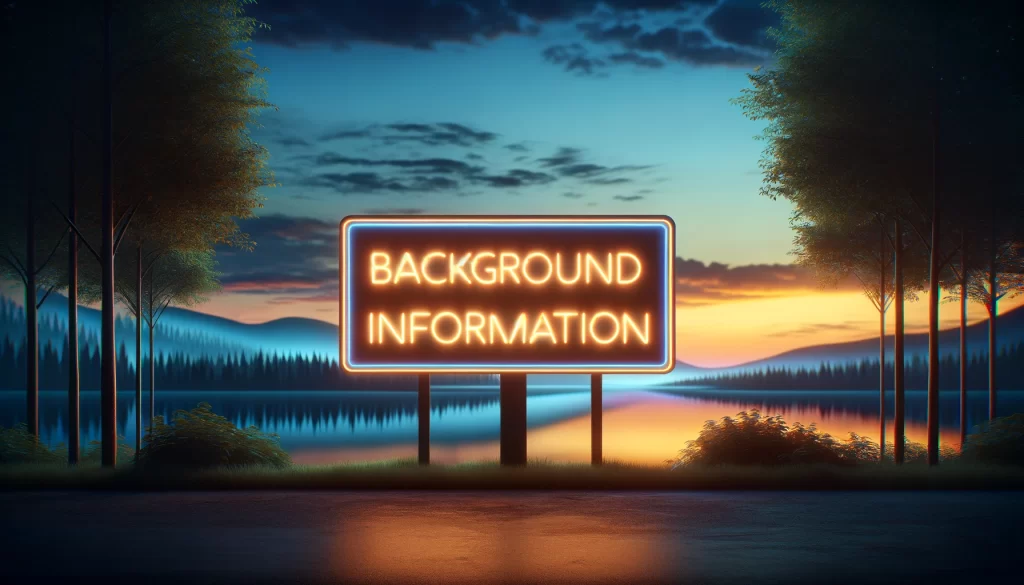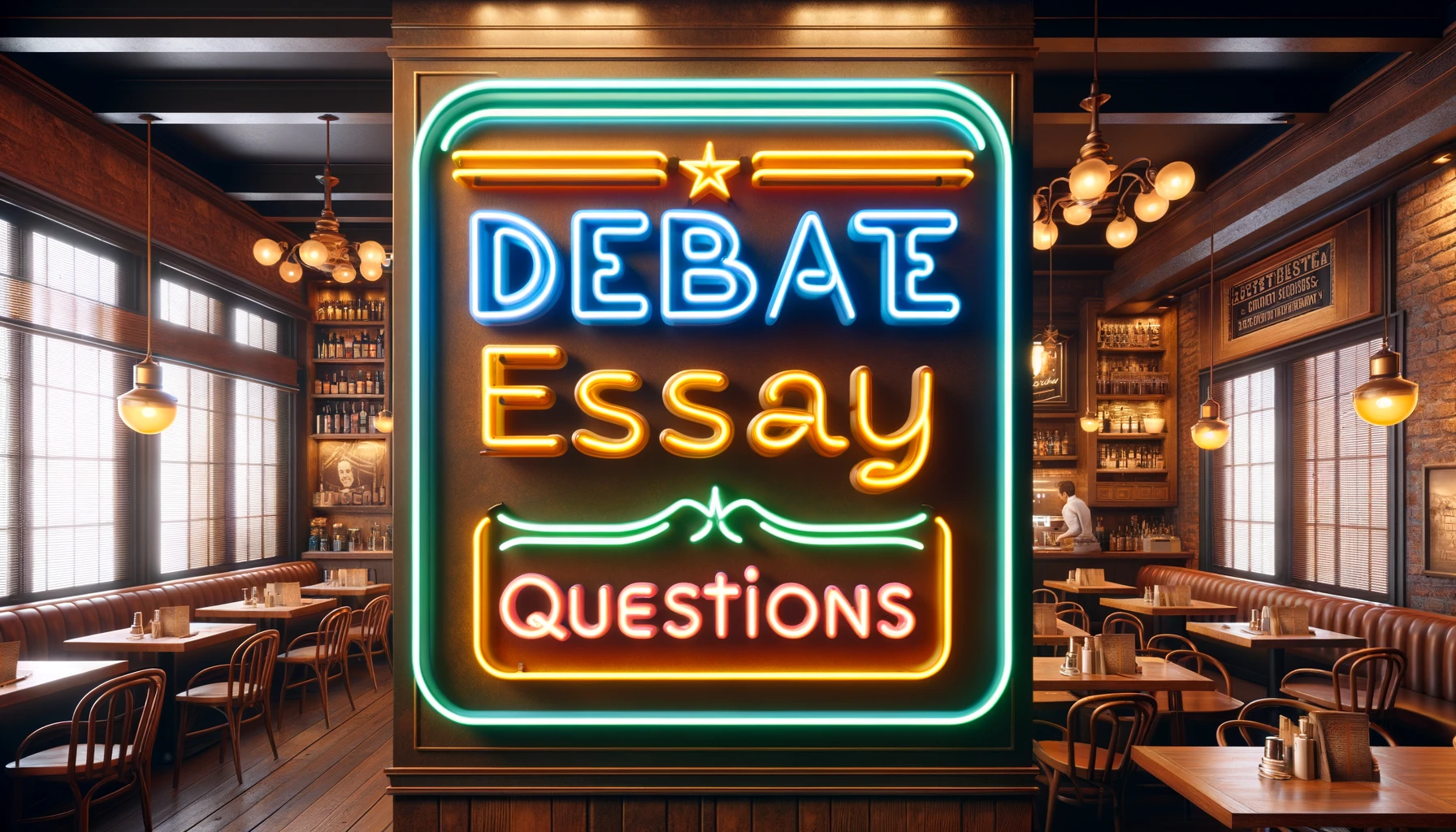In November 2022, a group of LGBTQ students at West Texas A&M University began organizing a drag show for the upcoming spring. Their goal was to raise money for suicide prevention and advocate for the right to express queer identities, especially during a time when some people in Texas were trying to stop drag shows, according to their claim, in order to protect children.
The student group, called Spectrum WT, decided that the show would be “PG-13.” They informed the university that anyone younger than 18 would need to be accompanied by a parent or guardian, a decision made with the siblings of a performer in mind.
However, the university’s president, Walter Wendler, decided in March 2023 that the event could not be held on campus. He expressed on his personal website that he believed drag shows were harmful and demeaning. Because of this, Spectrum WT took legal action against him, arguing that his decision was a clear case of discrimination based on his viewpoint.
Legally, Spectrum WT seemed to have a strong position. Since the 1970s, the U.S. Supreme Court has protected free speech at public universities, stating that all types of speech must be allowed, no matter how provocative or indecent it may seem. Despite this, President Wendler was prepared to stop the drag show, even if it seemed against the law.
The case was then handled by Judge Matthew J. Kacsmaryk, known for his conservative rulings. Recently, the Supreme Court introduced a new legal standard called the “history and tradition” test. This test allows judges to ignore recent legal developments in favor of older precedents.
This approach was used by conservative justices in three significant decisions in June 2022. First, they overturned a gun law in New York for not aligning with historical practices. Next, they ended the constitutional right to abortion established by Roe v. Wade, arguing it wasn’t rooted in the nation’s long-term history. Lastly, they ruled against a public school that had dismissed a football coach for praying publicly, citing historical practices of religious freedom.
These decisions triggered considerable uproar among liberal observers of the courts. They questioned the definitions of “historical” and “traditional,” as the broad and vague nature of these terms appeared to encourage an indiscriminate examination of historical practices from the 18th and 19th centuries. Critics like Joseph Fishkin, a law professor at the University of California, Los Angeles, criticized the methodology as essentially a way of saying, “if men in power didn’t recognize this right as fundamental in olden times, we won’t recognize it now,” pointing out the subjective nature of such historical interpretations. Reva Siegel, a Yale law professor, referred to this approach as playing “memory games” in a law review article about Dobbs. She also questioned why the conservative majority particularly appeals to history and tradition when they are making changes to the law, highlighting a possible inconsistency in their rationale.
Practical concerns have been raised by judges themselves. For example, Judge Carlton Reeves, appointed by President Obama to the federal bench in Mississippi, highlighted in a case challenging gun restrictions that judges are not trained historians. He critically noted, “We are not experts in what white, wealthy, and male property owners thought about firearms regulation in 1791.”
Among conservatives, a vigorous debate is ongoing regarding the adherence to originalism, a legal philosophy that interprets the Constitution based on the meaning understood at the time it was written. This method has been a cornerstone of conservative judicial thought since the 1980s, popularized by figures like former Justice Antonin Scalia. While originalism shares similarities with the history-and-tradition test by emphasizing historical context, its primary aim is to anchor the Constitution’s meaning to its original context, thereby preventing modern judges from imposing contemporary values over historical wisdom.

However, the application of originalism has been criticized for its inconsistency and flexibility, which some argue allows judges to justify preconceived conclusions under the guise of historical fidelity. This critique extends to the history-and-tradition method, which, unmoored from any specific historical moment, provides an even broader spectrum of historical sources from which judges can selectively draw, potentially leading to cherry-picking.
This skepticism was somewhat validated by a surprising source. During a lecture at Catholic University’s law school in September 2023, Justice Amy Coney Barrett, who clerked for Scalia and later joined Justice Alito’s opinion in Dobbs, cautioned that searching for historical precedents can be akin to “looking over a crowd and picking out your friends.”
Judge Kacsmaryk issued his opinion about the student drag show on the same day. He referenced the Supreme Court’s historical approach, similar to the method used in a 2022 gun case, to argue that the early interpretations of the First Amendment differ significantly from those of today. Kacsmaryk cited an 18th-century treatise that supported the government’s authority to suppress “licentiousness” and a 19th-century law that prohibited the mailing of “lascivious” materials. He argued that historical precedents like these should still define the boundaries for “sexualized ‘expressive conduct.'” Based on this reasoning, Kacsmaryk concluded that the university had the right to prohibit the drag show, marking a decision that starkly contrasts with modern views on freedom of expression.
In March, the Supreme Court decided against allowing a student group to hold their second annual drag show at West Texas A&M University. The matter, following Judge Kacsmaryk’s initial ruling, is now under review by the U.S. Court of Appeals for the Fifth Circuit. A key issue remains unresolved: Will the definition of American freedom change as some conservative judges apply historical perspectives to modern issues?
Justice Samuel Alito, known for his influence in the Dobbs decision that overturned Roe v. Wade, describes himself as a “practical originalist.” This means he prioritizes outcomes over strict adherence to theory. In the Dobbs case, he used the history-and-tradition test to address a challenge from those opposing abortion: historically, U.S. courts followed English common law, which allowed abortions early in pregnancy, particularly before the stage known as “quickening” — the first detectable fetal movements, usually felt between 15 and 18 weeks.
This historical view was highlighted in a brief submitted by the American Historical Association and the Organization of American Historians during the Dobbs case. They pointed out that early American laws only recognized abortions as occurring after quickening.
In 1973, the Supreme Court’s decision in Roe v. Wade marked a significant shift. Justice Harry Blackmun, who wrote the majority opinion, noted that early American views on abortion were less restrictive compared to later state laws. He emphasized that historically, women had a broader right to terminate a pregnancy than they did at that time.
Unlike originalists, Blackmun did not see history as a strict guide but as a helpful reference. He and others viewed historical context as important but not the sole determinant of legal interpretations. This approach allowed the court to adapt the Constitution to contemporary values and needs.
The constitutional right to abortion was founded on the 14th Amendment, ratified in 1868, which includes the due process clause stating that no state shall deprive any person of life, liberty, or property without due process of law. The Supreme Court interpreted this clause to encompass a right to privacy, which Blackmun argued included the right to make decisions about one’s own pregnancy.

Over the years, both liberal and conservative justices have used the due process clause to expand constitutional rights to address new social realities. For instance, Justice Anthony Kennedy, a nominee of Ronald Reagan, authored the majority opinion in the landmark 2015 case Obergefell v. Hodges, which recognized the right to same-sex marriage. Kennedy highlighted that the framers of the Constitution and amendments did not claim to understand all possible aspects of freedom, thus leaving it to future generations to determine the scope of liberty.
In the Dobbs decision, Justice Samuel Alito critiqued the Supreme Court’s previous reliance on the due-process clause in abortion-related cases, labeling it as “controversial.” He did not, however, invalidate the use of this clause entirely as doing so would eliminate many established modern rights and freedoms. Interestingly, only Justice Clarence Thomas expressed interest in reevaluating these broader applications, but no other justices joined his opinion.
Justice Alito’s focus was primarily on overturning the right to abortion. He argued that the legal acceptance of abortion was not a deeply rooted part of America’s history, citing that there was a longstanding tradition of criminalizing abortion since the early days of common law up until 1973. However, he overlooked the fact that before the Civil War, legal actions concerning abortions typically occurred only after quickening, and prosecutions were rare unless the procedure resulted in severe harm or death to the woman, as noted by Nancy Cott, a retired Harvard history professor.
Alito further claimed that by 1868, the year the 14th Amendment was ratified, the vast majority of states had laws criminalizing abortion at any stage. However, Aaron Tang, a law professor at the University of California, Davis, contends that this number is exaggerated and that many states still allowed abortions before quickening at that time.
Justice Alito also emphasized additional abortion restrictions enacted through 1910 but ignored historical evidence showing that some states had taken steps to legalize abortion under certain conditions before and after Roe v. Wade. His selective use of historical data suggested a biased view, similar to the criticism Justice Amy Coney Barrett articulated about looking for favorable evidence in history.
The history-and-tradition test introduced by Alito holds potential implications beyond abortion rights. For example, it influenced a decision by the U.S. Court of Appeals for the Sixth Circuit regarding Tennessee’s ban on gender-related medical treatments for minors. The court acknowledged parents’ rights to decide on their children’s medical care but denied the claim that this right extended to newer medical treatments because it wasn’t rooted in national tradition.
This approach was also central in the case of United States v. Rahimi, which involved the intersection of gun rights and domestic violence. The 1994 federal law in question prohibits gun possession by individuals under protective orders for threatening their partners. However, the U.S. Court of Appeals for the Fifth Circuit overturned this law, viewing it as historically unprecedented and thus unconstitutional.
The Biden administration argued at the Supreme Court that disarming dangerous individuals fits within a broader historical tradition of regulating firearms for public safety. Yet, historical disarming practices often targeted marginalized groups like enslaved people and Native Americans, which the administration deemed inappropriate comparisons.
During the Supreme Court’s review, some conservative justices seemed inclined to find a way to uphold the government’s ability to disarm domestic violence offenders, suggesting that the legislature could make such decisions based on assessments of danger.
Justice Ketanji Brown Jackson articulated her skepticism about the true nature of this legal test. “If we’re still applying modern sensibilities, I don’t really understand the historical framing,” Jackson remarked. This statement pointed out a paradox within the Supreme Court’s methodology: the attempt to anchor legal interpretations in history while still acknowledging modern realities. Her critique suggests that the Court and lower jurisdictions might be caught in a bind: either they allow historical contexts, no matter how outdated, to dictate modern legal outcomes, or they admit that the history-and-tradition test is less about strict adherence to historical truth and more about selecting convenient precedents.
This article is based on the following article:

Background Information
By understanding these elements, readers will have a better framework for analyzing the complexities of how historical perspectives and modern values intersect in the American legal system. This knowledge will also enhance their ability to critically assess how legal decisions impact various aspects of society.
1. Constitutional Law in the United States
- The Constitution is the supreme law of the United States, providing the framework for government and the protection of civil liberties. It includes the Bill of Rights, which comprises the first ten amendments guaranteeing specific freedoms and rights.
- The First Amendment protects freedoms concerning religion, expression, assembly, and the right to petition. It forbids Congress from both promoting one religion over others and also restricting an individual’s religious practices. It guarantees freedom of expression by prohibiting Congress from restricting the press or the rights of individuals to speak freely. It also guarantees the right of citizens to assemble peaceably and to petition their government.
2. Judicial Philosophy
- Judicial philosophies influence how judges interpret the law, particularly the Constitution. Two main philosophies discussed in the article are originalism and the history-and-tradition test.
- Originalism argues that the Constitution should be interpreted based on the meaning understood at the time it was adopted. This view is associated with conservative judges, including former Justice Antonin Scalia.
- The history-and-tradition test is a method of interpretation that looks to historical practices to determine the constitutionality of modern laws. This test has been used to maintain traditional interpretations over more progressive or modern understandings of rights.
3. Supreme Court Dynamics
- The U.S. Supreme Court is the highest court in the United States, with ultimate appellate jurisdiction over all federal and state court cases that involve a point of federal law. The Court’s decisions significantly influence U.S. law and politics.
- Justice appointments to the Supreme Court can shift the philosophical and ideological balance of the court, influencing major rulings on contentious issues like abortion, gun rights, and freedom of speech.
4. Key Legal Cases and Terms
- Roe v. Wade (1973): This landmark decision ruled that the Constitution of the United States protects a pregnant woman’s liberty to choose to have an abortion without excessive government restriction.
- Dobbs v. Jackson Women’s Health Organization: This is a recent decision where the Supreme Court overturned Roe v. Wade, significantly altering abortion rights in America. The decision reflects a historical and traditional approach to interpreting constitutional rights.
- Obergefell v. Hodges (2015): This case ruled that the fundamental right to marry is guaranteed to same-sex couples by both the Due Process Clause and the Equal Protection Clause of the Fourteenth Amendment to the United States Constitution.
5. Modern Legal Debates and Societal Issues
- Gender rights and LGBTQ+ issues: The rights and legal recognition of LGBTQ+ individuals, including debates over drag shows and gender-related medical treatments for minors, are significant in current legal and cultural contexts.
- Gun control and violence: Legal debates over gun ownership rights versus public safety continue to be contentious, particularly how historical interpretations influence modern legislation.
- Freedom of expression and censorship: How the First Amendment applies in modern contexts, such as university settings or in relation to potentially offensive or divisive activities like drag shows, remains a critical area of legal debate.

Debate/Essay Questions
- Should the interpretation of the Constitution evolve with societal changes, or should it remain fixed based on historical traditions and the original intentions of the framers?
- Does the history-and-tradition test protect the foundational values of society, or does it hinder progress by maintaining outdated norms?
- Should the Supreme Court have the power to overturn longstanding precedents, such as Roe v. Wade, based on changes in the court’s composition?
- Should modern sensibilities influence how historical texts and laws are interpreted in court decisions?
- How should courts balance the rights of parents to make medical decisions for their minors with societal concerns about the appropriateness of certain medical treatments for children?
Please subscribe to Insight Fortnight, our biweekly newsletter!
